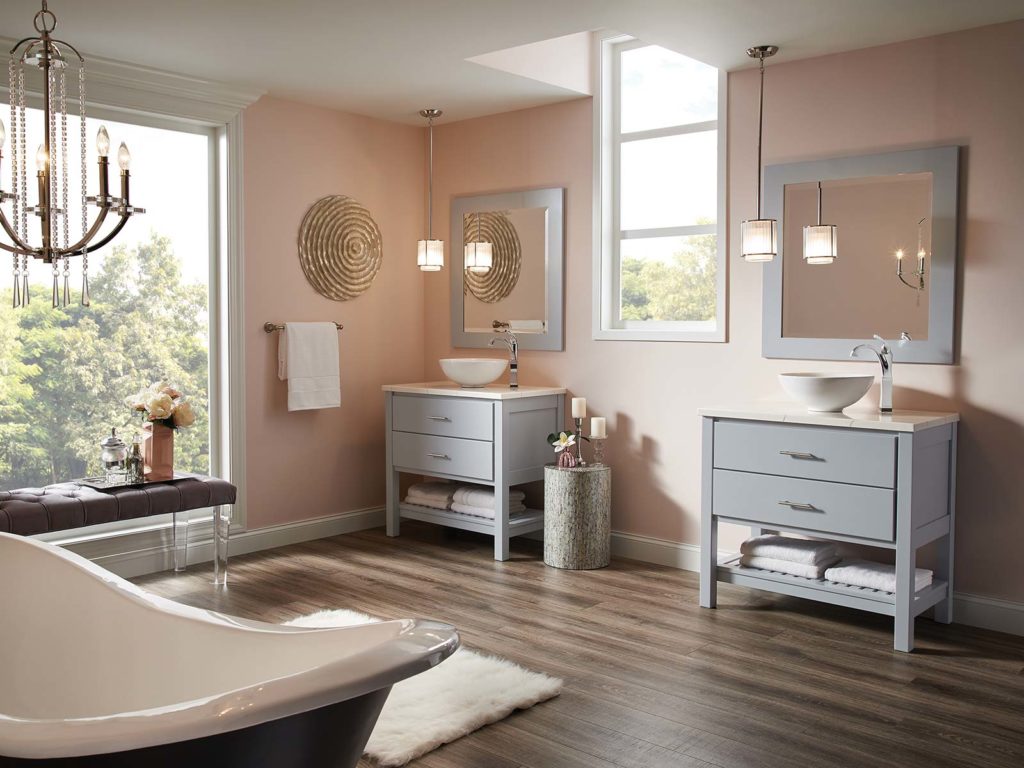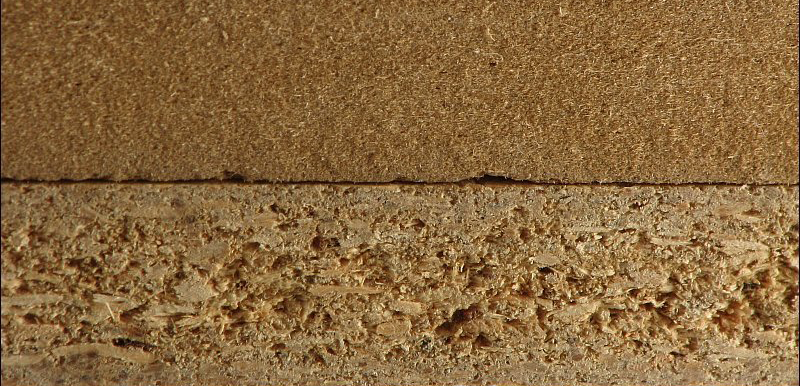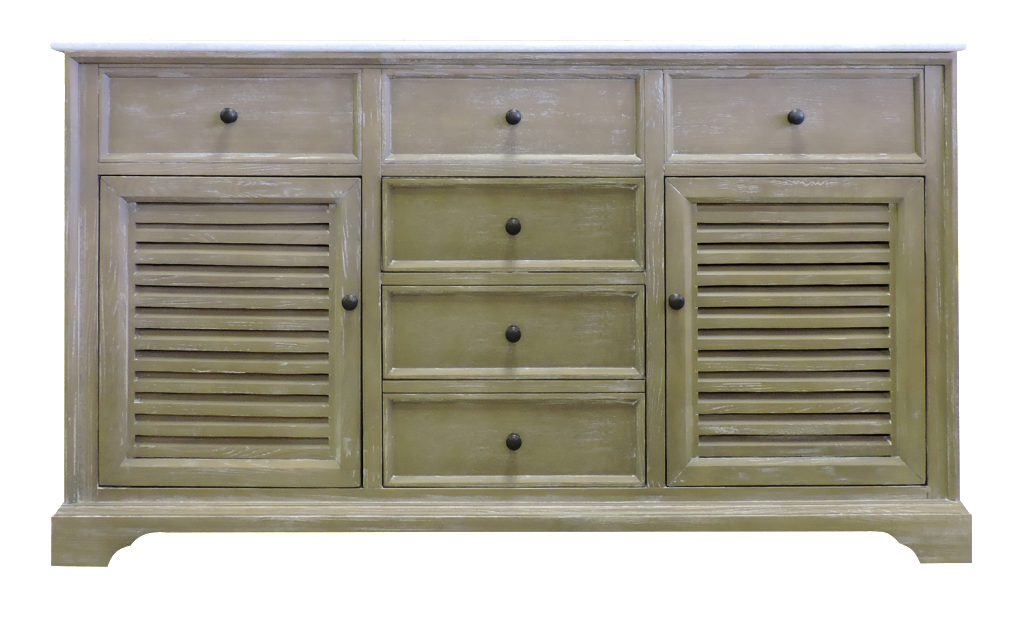-

Bathroom Vanity Material- What’s the Big Deal?
Choosing the right Bathroom Vanity is a pretty big deal especially if this is your forever bathroom! Not all vanities are created equal! Here we discuss the differences in material used.
 Share on Facebook
Share on Facebook
June 17, 2019
Choosing the perfect bathroom vanity is tough enough as it is, but when you factor in bathroom vanity materials, it becomes a pretty big deal! Whether you’re fully renovating your bathroom layout or simply updating your decor, you will need to consider what is best for you, your home and your wallet – long term. No one renovates or updates to come back and do it again in a year or two. While choosing the first cheap, attractive vanity you see may seem like a no brainer, it would do you well do a little research (or just read this article!).

In vanities or cabinets, you will most often find Solid Wood, Plywood, MDF (Medium Density Fiberboard), or Particle Board as the material listed. It can be confusing as to what you need to base your decisions on. Obviously, price and durability are the most important. While ALL vanities work, they may not ALL work for YOU. Your daily hygiene habits and design choices can play a part in what will hold up best in your bathroom. Let’s look at a Comparison.
Most Common Bathroom Vanity Materials
Bathroom Vanity Material – Particle board
Pros
- Price; cost less to produce and less to buy
- Can be covered with wood veneer, melamine, or laminate
Cons
- Sags over an extended period of time and under the weight of solid surface countertops, such as granite or quartz.
- VERY easily damaged by water, and most importantly, steam
You may not realize how much steam comes into contact with your vanity. Every time you shower, take a bath or even have the hot water running for more than a few seconds, your vanity is subject to the steam. This will cause the material to break down, and you will need a replacement.
The photo below is of a water damaged particle board vanity.

For this reason, we do not use particle board for our bathroom vanity materials at either of our retail locations. While profit margins might be higher, we value our clients and want their purchases to last as long as humanly possible.
Bathroom Vanity Material – MDF:
- Engineered wood composite similar to particle board, but denser and stronger
- Compressed using tiny bits of wood, for a long time and at high temperatures
Pros
- Price
- Smooth surface
- No knots or splinters around edges
- Takes paint extremely well; custom cabinet or vanity makers won’t want to paint real wood due to the cracking of the paint
Cons
- High maintenance (not easily repairable if chipped or cracked)
- Exposure to water causes swelling
- Glue within makes it difficult to sink nails or screws
- Cannot be stained

MDF VS. PLYWOOD Plywood
Plywood is made from veneers of wood glued into layers that form sheets. Like particle board, these bathroom vanity materials come in a variety of thicknesses and qualities.
On the low-end, soft woods, quick dry glues, and voids can be often found between the layers. This plywood is usually coated with a plastic that has a wood grain pattern applied because the wood they use isn’t very attractive and may not finish well.
On the high end, however, it is a very attractive wood and a truly solid choice (no pun intended) for your bathroom vanity. It VERY rarely will degrade.
Cautions:
While you want to be cautious of water damage with all types of woods, high end plywood has a pretty high success rate in terms of holding up for a long period of time.
Some people question a vanity that has plywood on the sides or back, and wonder if solid wood would be a better choice? In reality, it’s not. The plywood will be more stable over the long run than solid wood. That is because the plywood will not move due to moisture/humidity/temperature changes like solid wood does.
If covered in veneer, it will be as stable as the plywood and will not chip/peel except under unusual circumstances. In that case, it would affect real wood in the same way. Plywood is a great choice for bathroom vanity materials, which is why we carry them in our stores.
Solid Wood:

While nothing really compares with solid wood in most projects, it actually is not ALWAYS the best choice for bathroom vanity. Solid wood comes in two variations; solid wood (all natural real wood) and solid hardwood.
Durability:
Solid hardwood is the most durable wood material and is made from woods like oak, cherry, and maple. Solid wood has the tendency to shrink and expand as humidity changes. Expansion can cause cracks in the painted finish and also warping (in extreme cases).
Benefits:
Real wood is porous in nature so it will absorb water molecules in the air. However, I won’t dare say that real wood is a bad material. It’s been used for centuries and is still the preferred option by many contractors and builders. The strength and durability of solid wood is why many choose to go with wood bath vanities, so it really depends on what you find most important. By keeping humidity in control, most homeowners won’t have any problems with this beautiful material. It works best with a natural or stained finish, as opposed to paint.

Feel free to stop into Builder Supply Outlet or the Edge Showroom with any home improvement questions you may have regarding tile, backsplash, cleaning, sealing, grout, windows, kitchen cabinets, remodeling, construction, contractors, designing/installing a new kitchen or bathroom — or anything else. We can help you through the entire design and installation process from A-Z. Or call us anytime in Broadview, IL at 1-708-343-3900. You can also make an appointment to meet with one of our Edge Kitchen and Bathroom designers at no charge by clicking here.

- My account Cart
-
OPEN TO THE PUBLIC | Store Hours and Information708.343.3900 OPEN TO THE PUBLIC Store Hours and Information
- 708.343.3900 Español Schedule Your FREE
Design Consultation
